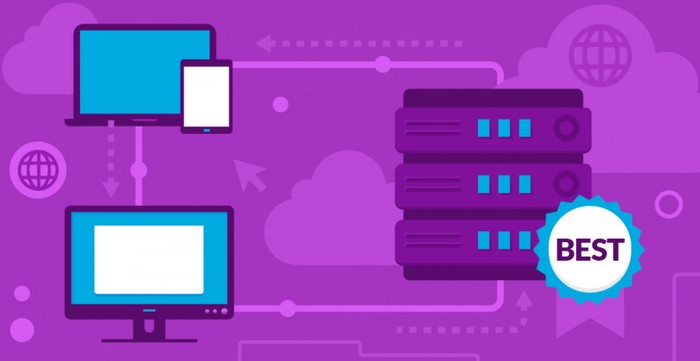
The way we interact with our smartphones has dramatically evolved over the years, with one of the most significant advancements being the development of smartphone virtual keyboards. These digital input methods have replaced physical keyboards, providing users with the flexibility to type on touchscreens with incredible speed and accuracy. The continuous improvements in virtual keyboard technology have not only made typing more efficient but have also introduced new features that enhance user experience, personalization, and accessibility. This article explores the innovations behind smartphone virtual keyboards, how they are changing the way we type, and the future of this essential tool in modern communication.
The Evolution of Smartphone Virtual Keyboards
The first touchscreen smartphones, such as the early models of the iPhone, relied heavily on basic virtual keyboards that allowed users to tap on a touchscreen to input text. While functional, these early keyboards were often frustrating to use, especially when it came to accuracy and speed. Over time, smartphone virtual keyboards have undergone significant changes, offering more intuitive and user-friendly designs.
Touchscreen to Predictive Text
The earliest versions of smartphone virtual keyboards were simple and straightforward, with users having to press each key individually. However, as mobile technology advanced, so did the keyboards. One of the major breakthroughs came with the introduction of predictive text, which uses algorithms to predict the next word a user is typing based on context and previous input. This feature greatly reduced typing time by suggesting words or phrases that the user could simply tap with one click. Predictive text technology is now a standard feature in most smartphones, making typing much faster and reducing the number of keystrokes required.
Auto-correction and Voice-to-Text Integration
Auto-correction was another vital innovation that significantly improved the user experience with smartphone virtual keyboards. By automatically correcting common spelling errors or mistyped words, the system made typing less tedious and more accurate. In addition to this, the integration of voice-to-text technology enabled users to dictate their messages instead of typing them, providing an even faster and hands-free alternative for communication. These combined innovations have made virtual keyboards indispensable for modern smartphone users.
New Features and Personalization in Smartphone Virtual Keyboards
As smartphone technology has advanced, so too have the features and customization options available for virtual keyboards. Today’s users expect more than just basic typing capabilities; they want personalized, intelligent experiences that suit their individual needs.
Gesture Typing and Swipe Features
One of the most popular innovations in smartphone virtual keyboards is the introduction of gesture typing or swiping. This feature allows users to slide their fingers across the keyboard, connecting the letters of a word without lifting their finger. By recognizing the continuous motion of the swipe, the keyboard can predict the intended word and insert it with a single swipe. This method of typing is especially useful for one-handed typing, as it is much quicker and more natural than tapping each individual letter.
Gesture typing has also been refined with customizable swiping gestures, allowing users to adjust how their keyboard responds to swipes. For instance, some keyboards allow users to swipe up to insert capital letters or swipe in a specific direction to delete a word or insert punctuation. This level of personalization makes smartphone virtual keyboards more versatile and faster for different typing needs.
Multilingual Support and Emoji Integration
Another area where smartphone virtual keyboards have seen significant innovation is in multilingual support. With an increasingly globalized world, users often need to type in multiple languages. Many modern virtual keyboards now support multiple languages and can seamlessly switch between them without the need for additional settings. This feature is enhanced by auto-suggestions in multiple languages, which ensure that words are predicted based on the language being typed.
In addition to multilingual support, emoji integration has become an integral part of virtual keyboards. Emojis have revolutionized digital communication, allowing users to express emotions and ideas visually. Virtual keyboards have incorporated this by adding dedicated emoji keyboards, making it easier to access a wide range of symbols and icons with just a few taps. Additionally, some keyboards now predict emojis based on the text being typed, further enhancing the typing experience.
Accessibility Features
Accessibility has been a significant focus in recent innovations in smartphone virtual keyboards. To ensure that everyone, including those with disabilities, can easily use smartphones, many virtual keyboards now come equipped with assistive technologies. These include features such as high-contrast themes for visually impaired users, larger keys for those with motor difficulties, and screen readers for those who are blind or have limited vision. These features not only make virtual keyboards more inclusive but also ensure that everyone can take full advantage of smartphone technology.
The Future of Smartphone Virtual Keyboards
The rapid evolution of smartphone virtual keyboards suggests that even greater innovations are on the horizon. As artificial intelligence (AI) and machine learning technologies continue to advance, we can expect virtual keyboards to become even more intelligent and responsive to our needs.
AI-Driven Personalization
In the future, AI could drive even more personalized typing experiences. Virtual keyboards may learn from a user’s typing habits, preferences, and even emotional tone. For instance, if a user tends to type in a particular style or tone, the keyboard could adjust its predictive text to match the user’s voice. Furthermore, AI could enable virtual keyboards to predict entire sentences or paragraphs based on the context, further streamlining the typing process.
Haptic Feedback and Enhanced Sensory Input
Haptic feedback, which provides a tactile response to users while typing, is also expected to improve. In the future, smartphone virtual keyboards may offer more nuanced haptic responses, simulating the sensation of pressing physical keys. This could help bridge the gap between physical and virtual typing, making users feel more connected to the screen and reducing the frustration often felt with touchscreen-only input methods.
Integration with Augmented Reality (AR)
Looking even further ahead, we may see the integration of virtual keyboards with augmented reality (AR). Imagine being able to project a virtual keyboard onto any surface and typing as if you were using a traditional keyboard. With AR technology becoming increasingly advanced, it’s not outside the realm of possibility that this type of experience could be available on smartphones in the future, further revolutionizing the way we type and interact with our devices.
In conclusion, smartphone virtual keyboards have come a long way since their inception. From basic touchscreen keyboards to the advanced, feature-rich systems we use today, innovations in typing technology have continuously improved the efficiency, accessibility, and personalization of our typing experiences. As AI, gesture controls, multilingual support, and other technologies continue to evolve, the future of smartphone virtual keyboards looks bright. We can expect even more intuitive, responsive, and user-friendly designs that will continue to make typing on our smartphones faster and more enjoyable, making them an indispensable tool for communication in the years to come.




